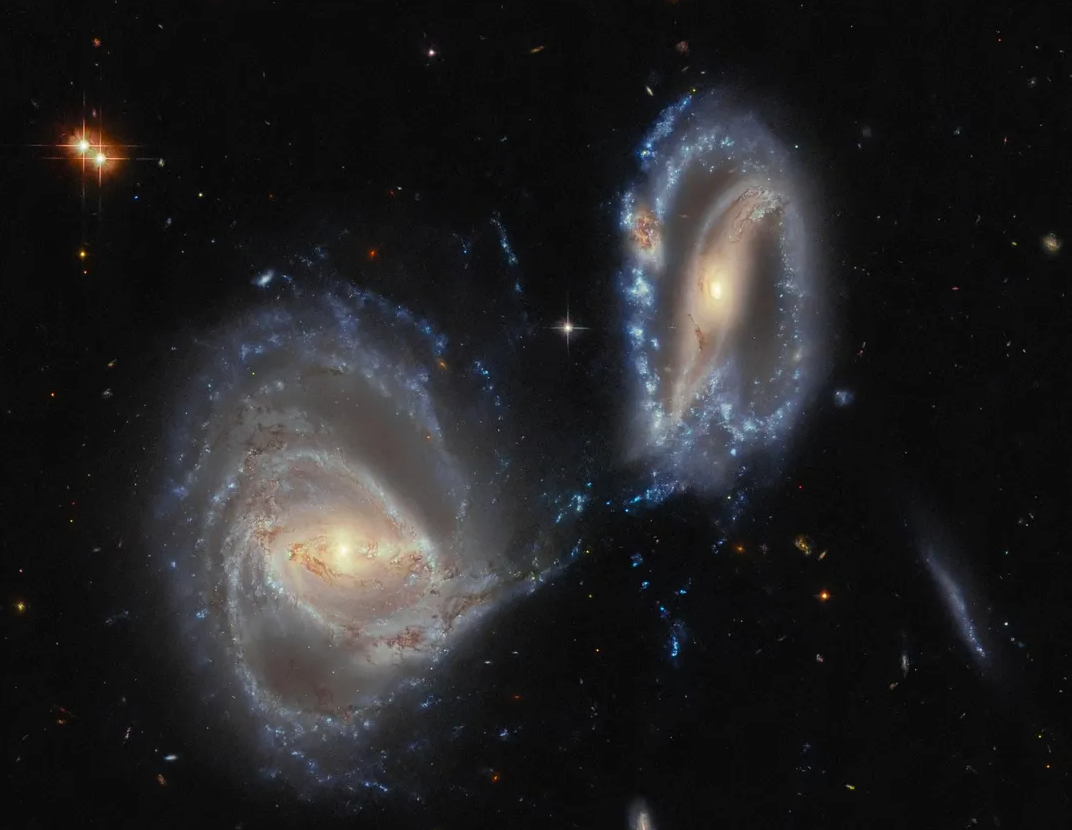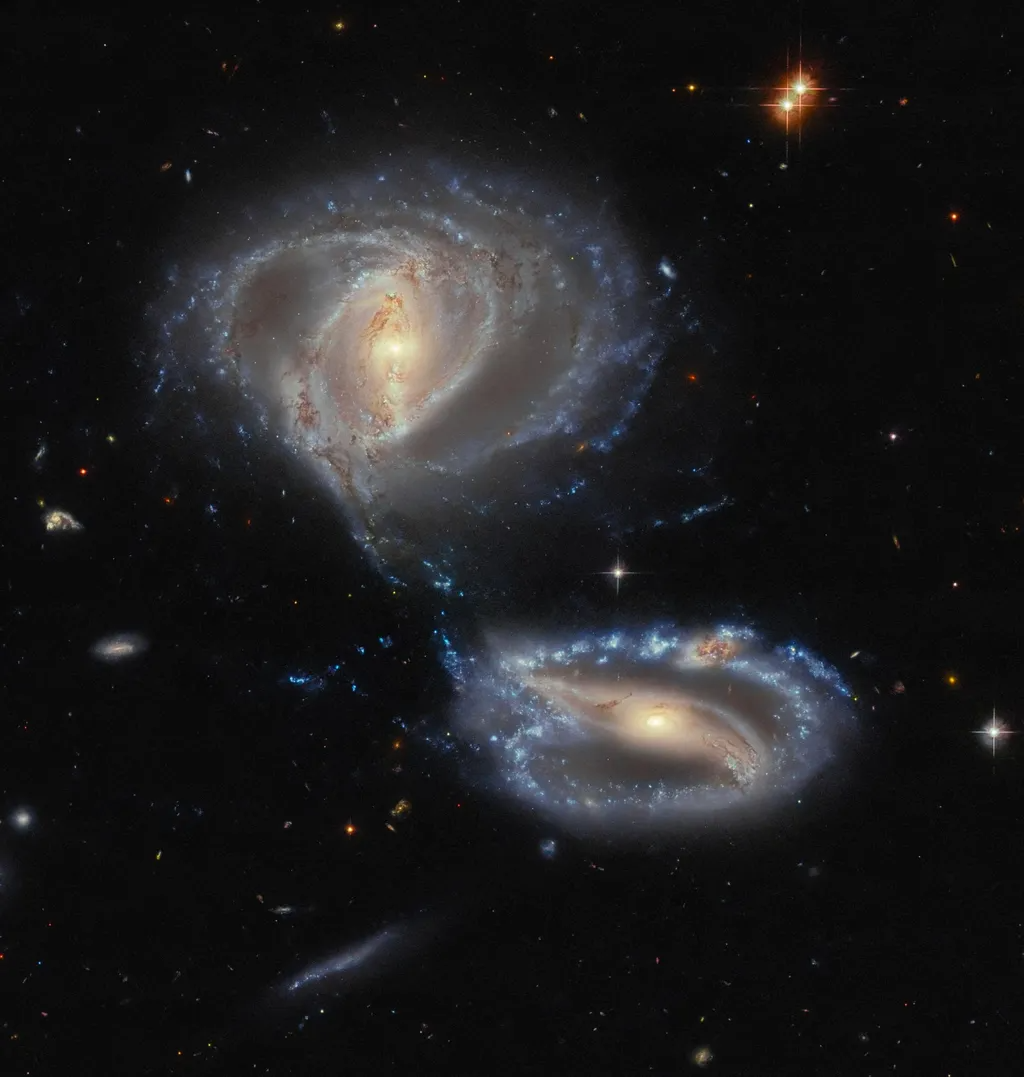
NASA has published an image of the pair interaction of galaxies Arp-Madore 2339-661, which is associated with the dancing of supermassive space objects. Photo taken by the Hubble Space Telescope (NASA/ESA).
The two clearly defined galaxies are NGC 7733 (smaller, bottom right) and NGC 7734 (larger, top left). The third galaxy is now called NGC 7733N and can be seen if you look closely at the upper arm of NGC 7733. There is a knot-like structure that glows a different color than the sleeve and is obscured by dark dust. It could have been mistaken for part of a larger galaxy, but the scientists conducted a velocity analysis that showed that this node has a significant additional redshift. This means that it is likely to be a separate entity.

This group of galaxies represents one of the many challenges facing observational astronomers: figuring out whether an astronomical object is one or more objects lying in front of others from an Earthly perspective!
All three galaxies lie quite close to each other, about 500 million light-years from Earth in the direction of the Tucana constellation. They gravitationally interact with each other and will eventually become one.

